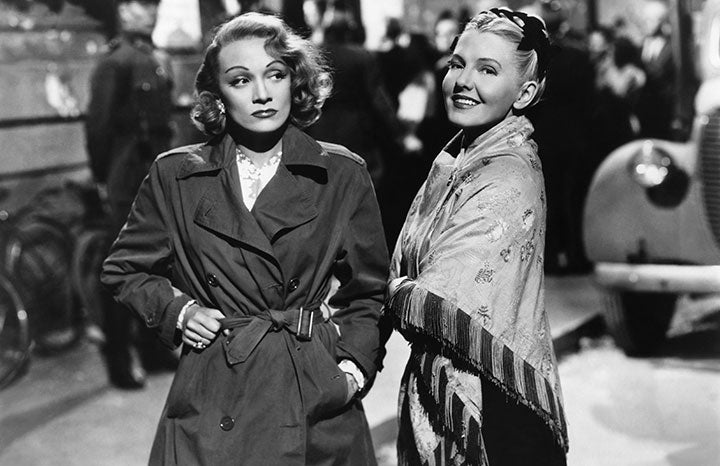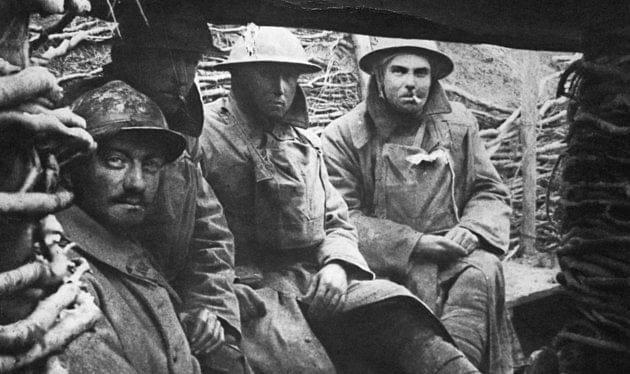History of the Trench Coat
Now regarded as a timeless style, the origins of the trench coat date back to the 1820s. The trench coat, once military uniform, is now the go-to coat for a sophisticated ensemble in the 21st century. The trench coat’s origins are often debated, but it is always regarded as a symbol of quintessential British smartwear. Flash forward to 2020, the trench coat has been reimagined in countless fabrics and styles. It is the perfect choice for city and country life alike.
But who invented it and why was it so revolutionary? How exactly did it go from military uniform to a universal piece for film star archetypes and (nowadays) a great piece to throw on when you need to put some effort in?
This guide covers the history of the trench coat, who invented it and the best ways to wear it and the correct sizing.
What is a trench coat?
A trench coat can be identified by the following features:
- Double-breasted
- Wide lapels
- 6-10 button fastening
- A pleated cape, also known as a “storm flap” to allow rain to fall off
- Waist belt (either a D-ring or tie)
- Adjustable buckle cuffs around the wrists
- Made from heavy-duty cotton
- Waterproof
- Raglan sleeves
- Knee-length or full-length
The trench coat's design made it practical in war, but also in everyday life. The length and cut, with the adjustable belted waist, made it a flattering shape for men and women. A popular style in Hollywood films, it was worn by detectives, gangsters and femme fatales alike.
 Source: A Foreign Affair // Marlene Dietrich, 1948
Source: A Foreign Affair // Marlene Dietrich, 1948
Who invented the trench coat?
In the early 19th century, almost 100 years before World War I, Charles Macintosh crafted coats from rubberised cotton for the British military. Named after their inventor, the trench coat used to be known as ‘macs’. The coats were revolutionary because they were waterproof. However they, lacked breathability and had a distinctive smell due to keeping sweat in. They were even known to sometimes melt in the sun.
From this, other clothiers developed new waterproof fabrics that addressed the need for greater ventilation. In 1853, John Emary patented a new waterproof fabric that was much more breathable for his company called ‘Aquascutum’ (Latin for “water shield”).
A few years later, Thomas Burberry created gabardine fabric in 1856. This was a waterproof and breathable twill fabric which coated individual fibre strands, rather than the whole fabric.
 Source: Hulton-Deutsch Collection/Corbis // British soldiers in trench coats, 1914
Source: Hulton-Deutsch Collection/Corbis // British soldiers in trench coats, 1914
The classic trench coat’s design developed from the needs of soldiers during WWI. Soldiers had previously worn long wool overcoats which could be itchy, ill-fitting and heavy. The trench coat offered a silhouette that was shorter, lighter and waterproof.
The design details were functional as the storm flap on the shoulder enabled ventilation, whilst at the back a small cape allowed water to roll off. Deep pockets and D rings on the belt for attaching tools finished off the practical design.
 Source: Naval Historical Center // Lieutenant General Omar Bradley and Major General J. Lawton Collin, 1944
Source: Naval Historical Center // Lieutenant General Omar Bradley and Major General J. Lawton Collin, 1944
Where to buy a trench coat?
Gloverall is renowned for luxury trench coats that stand the test of time and put a modern spin on this timeless style. The Audrey Trench Coat features all the classic trench details with a contemporary oversized fit, whilst our Freya Trench Coat is available in rich autumnal shades and made from a chunky corduroy.

Discover our classic range of women’s coats today.